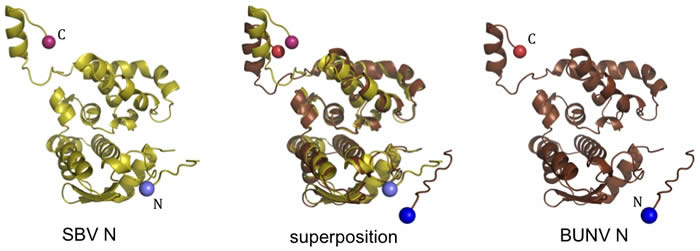Bunyamwera virus
Our laboratory has had a long-term interest in Bunyamwera virus (BUNV), which is the prototypic member of the Bunyaviridae family of segmented negative stranded RNA viruses. We study BUNV as it is an excellent model system with which to study the fundamental molecular and cellular biology of more pathogenic bunyaviruses, yet without the need for restrictive biological containment facilities. Study of BUNV is also made easier due to the large body of accumulated published work and reagents, much of which was generated in the laboratory of the late Professor Richard Elliott (formerly of The Centre for Virus Research) and we recognize his past support.
We currently have two projects that focus of the molecular and cellular biology of BUNV.
1). The structure, function and assembly of the BUNV nucleocapsid protein. This project is jointly run by Dr. Thomas Edwards (at The University of Leeds) and aims to use structural biology techniques including X-ray crystallography and electron microscopy to perform a comprehensive analysis of the N protein and reveal how it wraps up the viral RNA genome. We have recently solved the crystal structure of the BUNV N protein with RNA bound, and also the Schmallenberg N protein. Together, these structures have revealed many important features of the orthobunyavirus RNP and its activities.

2). Interactions between host cells and BUNV components. We are interested in identifying and characterising the host cell factors that interact with BUNV proteins, particularly during the entry phase of the virus life cycle. This project has so far involved a variety of cell biology techniques, pharmacological ion channel manipulation, quantitative proteomics, and gene ablation techniques. Recent progress on this project was published in The Journal of Biological Chemistry, Hover et al (2015).
